Search Papers
138 papers
ASSESSING THE CURRENT STATUS AND PROPOSED SOLUTION OF SOLID WASTE MANAGEMENT IN CAN SPORTS VIETNAM CO., LTD
Ho Bich Lien, Le Nguyen Hoai An
Assessing the current status of solid waste management in the leather footwear industry of Can Sports Vietnam Co., Ltd. in particular to identify urgent issues in solid waste management. Through the assessment process, it was found that the company has implemented well the steps of solid waste management from classification, collection and storage, according to the provisions of law and customers. However, there are still difficulties in management arising from workers' awareness, management costs, and facilities when storing waste. With the amount of solid waste increasing according to production needs, the topic has proposed appropriate solutions such as disseminating detailed instructions on the classification process to workers and establishing reward, and incentive mechanisms for improvement projects to help reduce solid waste in production.
UTILIZATION OF HYDROXYAPATITE/CRAB SHELL CHITOSAN COMPOSITES IN REMOVAL OF AQUEOUS CONGO RED: INFLUENCE FACTORS, ADSORPTION KINETICS AND ISOTHERM
Nguyen Trung Hieu, Ha Tuan Anh
Due to the limitations of traditional adsorbents for dyeing wastewater, this study combined natural adsorbent (CS, chitosan) and hydroxyapatite (HAp) to form a composite for enhancing the adsorption of aqueous Congo red (CR). The chitosan was prepared from crab shells (Somanniathelphusa sinensis) with a deacetylation degree of about 89%. The HAp and HAp-CS composites were prepared by precipitation in high pH (~10) with the help of concentrated ammonia water (25%). The crab shell chitosan and chitin were characterized by the FTIR method, and the HAp and HAp-CS composites were analyzed using the SEM method. The CR adsorption experiments were carried out in batch form and sampled once for each condition. The results showed that the characteristic peaks in the FTIR spectrum confirmed the success of the crab shell chitosan preparation. The HAp and HAp-CS composites possess porous structures and seem to have a high surface area. The CR adsorptions reached optimal after 5-15 min. contacting, the adsorption efficiency tended to decrease with the initial concentration of CR and increase with the adsorbent dosage. The initial pH of the solution affected the adsorption efficiency for the 70%HAp-CS and 30%HAp-CS composites but had almost no effect on the adsorption capacity of 0%HAp-CS and 50%HAp-CS. The 50%HAp-CS composite had the best adsorption capacity among the synthesized composites (qmax = 769.2mg/g). The adsorption isotherm and kinetics best fit the Langmuir isotherm and pseudo-second-order kinetics model.
KNOWLEDGE, SKILLS AND ATTITUDES OF NURSES ON PAIN MANAGEMENT FOR POST-TURP PATIENTS IN SELECTED PUBLIC HOSPITALS IN VIETNAM
Vo Huu Thuan, Joanna S. De Guzman
Pain is a global health concern that requires the attention of the healthcare services. This study aimed to evaluate nurses’ knowledge, skills on pain management for caring post – transurethral resection of the prostate (TURP) as well as explore the relationship between knowledge and skill regarding pain management for post – TURP patients. This study was conducted on 230 nurses who have worked at two public hospitals in Ho Chi Minh city from April to June 2024. The result showed that the majority of nurses were female, had a mean age of 37.3 years and an average of 13.7 years of direct clinical experience. Of these, 57.4% of nurses have attended the previous pain training course. The majority of nurses lack knowledge regarding pain management with 86.5%. The study also indicated that nurses’ educational level, knowledge and attitude toward pain management are significant predictive factors of nurses’ skills on pain management when caring post – TURP patients. Knowledge on pain management had a very strong positive correlation with attitude (r = 0.820, p < 0.001) as well as skills (r = 0.91, p < 0.001). Besides, there was a very strong and positive correlation between attitude and skills on pain management (r = 0.91, p < 0.001). There was a mediating relationship between knowledge, attitude and skills on pain management, attitude played a partial mediating role between knowledge and skills. In summary, the study indicates a need for targeted educational interventions to bridge the gap between knowledge and skills in pain management, particularly in non-pharmacological strategies, to improve overall care for post-TURP patients.
DISEASE KNOWLEDGE, PERCEIVED SUSCEPTIBILITY AND COMPLIANCE BEHAVIORS ON POST-KIDNEY TRANSPLANT REGIMEN AMONG ADULTS RESIDENTS OF HO CHI MINH CITY, VIETNAM
Pham Minh Son, Joanna S. De Guzman
The study aimed to evaluate disease knowledge, perceived susceptibility and compliance behaviors of post-kidney transplant patients as well as assess relationship between disease knowledge, perceived susceptibility and compliance behaviors. A descriptive cross-sectional study conducted on 153 post-kidney transplant patients from March to June 2024 at Outpatient Department of Cho Ray hospital. The result showed that the majority of respondents have a lack of knowledge regarding medication and lifestyle change post kidney transplantation. While perceived susceptibility of respondents were at a fair level. Majority of respondents has a low level of perception regarding barriers to adherence and susceptibility to transplant rejection, while they have a good level of perception regarding benefits of adherence to treatment with immunosuppressive medication. Compliance behavior of post kidney transplant adults was at a good level. Majority of respondents had good compliance behavior regarding medication, while exercise and psychological adaptation was the lowest level of compliance behavior. There are positive relationships between Compliance behaviors and disease knowledge (r = 0.49, p < 0.001); perceived susceptibility (r = 0.45, p < 0.001) and perceived susceptibility plays a partial mediating role between knowledge and compliance behaviors and the mediating effect accounted for 31% of the total effect of disease knowledge on compliance behavior. The study also indicated that educational level (ꞵ = 0.93, p = 0.020), duration of transplant (ꞵ = 0.20, p = 0.012) are predictive factors of compliance behavior among post – kidney transplant patients. Educational interventions targeting both knowledge and health beliefs, particularly for older individuals, could improve adherence to treatment and overall health outcomes.
INHIBITORY ACTIVITY AGAINST ALLERGIC RESPONSES AND PHARMACEUTICAL PROPERTIES OF MEMBERS OF PHYLLANTHUS GENUS
Dai Hung Ngo
Phyllanthus (Euphorbiaceae) is widely distributed in tropical and subtropical areas, including Vietnam, where it is considered a valuable medicinal herb. Numerous bioactive compounds from Phyllanthus species have been identified, demonstrating pharmacological effects such as antiallergic, anti-inflammatory, antioxidant, antidiabetic, anticancer, antiviral, antibacterial, antimalarial, and wound healing activities. This review provides a comprehensive summary of Phyllanthus genus and its pharmaceutical properties, emphasizing the methodologies used for bioactive compound extraction and evaluation, as well as their clinical relevance.
QUANTIFYING URBAN LAND EXPANSION AND THE DRIVING FORCES OF URBAN SPRAWL IN VIETNAM’S CENTRAL HIGHLANDS FROM 2000 TO 2023
Nguyen Ninh Hai, Nguyen Thi Thai Ha, Nguyen Thi Hong Thuong, Truong Quoc Minh
This study developed a dataset on land cover to analyze the continuous urban land extension in Buôn Ma Thuột City, located in the Central Highlands of Vietnam, from 2000 to 2023. The analysis employed object-based image analysis (OBIA) for backward classification and calculated expansion indices. The results reveal that the total urban land area increased by 22.75% over two decades, despite an average annual population growth rate of only 1.91%. The spatial growth exhibited relatively uniform growth in all directions, but it was most concentrated in the urban core and the northern and eastern parts of Hoa Thuan, Tan Loi, Tan An, Tan Hoa, and Tan Lap wards. This expansion included edge development (6.69%), leapfrog expansion (18.39%), and infill increase (5.44%). Driving factors, analyzed through Pearson correlation coefficients, indicate that urban land growth between 2000 and 2023 was positively influenced by GDP, urban population, and total population but was inversely correlated with the poverty rate. This study provides quantitative methodologies for better understanding urban land dynamics and offers practical strategies for sustainable urban development.
LIQUID LEVEL STABILIZATION USING FUZZY ALGORITHM WITH PLC S7 1200
Nguyen Thanh Doan, Pham Hong Thanh
This paper presents a method for liquid level stabilization using a fuzzy logic algorithm implemented on the PLC S7-1200. Maintaining liquid levels accurately is a critical requirement in various industrial processes to ensure safety, efficiency, and consistent product quality. The proposed approach employs fuzzy logic to manage the inherent nonlinearities and uncertainties in the system, providing robust control performance under varying operating conditions. The fuzzy controller is designed with rules and membership functions tailored to the dynamic characteristics of the liquid level system. The control logic is programmed and deployed on the Siemens PLC S7-1200, a widely used industrial automation device. Experimental results demonstrate that the fuzzy logic controller effectively stabilizes the liquid level, achieving better performance compared to traditional PID controllers in terms of response time, overshoot, and steady-state error. This study highlights the potential of integrating fuzzy logic with PLCs for advanced industrial automation applications.
BLOCKCHAIN APPLICATIONS IN THE ENERGY SECTOR
Nguyen Ba Thanh
As fossil fuel resources are gradually depleting, countries are increasingly focusing on developing renewable energy as a sustainable alternative. A trend is the shift of the energy market towards a decentralized model, where renewable energy can be traded flexibly. This is partly evidenced by the rise of blockchain-based solutions in the energy sector. Blockchain technology garners attention due to its outstanding advantages such as anonymity, decentralization, and transparency. Therefore, this study explores the application of blockchain in the energy sector. We shed light on four main areas: energy management, peer-to-peer (P2P) trading, applications related to electric vehicles, and carbon credit trading. This paper provides insights into how blockchain technology can act as a catalyst for revolutionizing the energy sector in both management and control
AN OPTIMAL CURRICULUM FOR TEACHING ENGLISH TO ATHLETES
Elena Yakovleva
Athletes often need to have good English skills to communicate with foreigners for different purposes. As known, many athletes are not able to speak English fluently. To enhance the national athletes’ English proficiency, the governmental institutions arrange various English courses for them. This study reflects the long-term (over seven years) teaching process of English to the athletes in terms of the English course content, namely General English and Sports English, topics, local teacher vs foreign teacher, teaching methods, evaluation criteria, implementation of visual means and AI. The study results are based on the teachers’ observational method and students’ feedback.
Most students liked the English course because they could speak English through discussions and conversations and learn new vocabulary, including General English and Sports English (ESP). The students liked the lessons’ topics (e.g. hotel/restaurant reservation, shopping, ordering food, and sports injuries) which were usually taught using PPTs, handouts, Youtube, and Kahoot. AI as ChatGPT, Perplexity, Grammarly, Alexa, etc. was recently implemented in the teaching of athletes as well, facilitating the teaching and learning process and making it more effective and fun. Most athlete students were satisfied to have both a local and foreign teacher for the former could provide explanations in Chinese and the latter could help them to overcome the language barrier and gain confidence in speaking English. Most of the athlete students were motivated to improve their English to communicate internationally.
This study investigates the structural and electronic properties of Au-doped silicene nanoribbons (SiNRs) under the influence of an external electric field of 0.4 eV/Å, utilizing density functional theory (DFT). The stability and structural integrity of SiNRs following Au doping are assessed, considering two distinct doping configurations: the top configuration and the valley configuration, where each unit cell incorporates a single Au atom. The formation energies of the doped systems are calculated to evaluate their thermodynamic stability based on DFT principles. Furthermore, detailed analyses of the density of states (DOS) and energy band structures are conducted. Both doping configurations exhibit metallic characteristics, indicating potential applicability in future nanoelectronic devices.
JOB SATISFACTION AND WORK ENVIRONMENT AMONG STAFF NURSES IN SELECTED HOSPITALS IN VIET NAM
Huynh Thanh Phong, Edreck D. Estioko, Huynh Nguyen Nhat Duy
Objectives: This study investigated the relationship between work environment and job satisfaction among nurses in selected hospitals in Vietnam to propose a framework for improving nursing practice.
Methods: A descriptive correlational research design was used and 375 nurses were randomly selected. Data were collected using validated instruments: the Nursing Work Index Practice Environment Scale and the Job Satisfaction Survey. Data analysis was performed using the Statistical Package for Social Sciences (SPSS) software. Descriptive statistics were used to measure the variables. Differences in work environment and job satisfaction were examined according to demographic data using independent sample t-tests and one-way ANOVA.
Results: The results showed that the work environment was scored as 2.64 (SD = .42) and the job satisfaction was scored as 3.52 (SD = .47). The work environment was highly correlated with job satisfaction (r = .52, p < .01). Furthermore, long working hours in a week can lead to decreased job satisfaction among employees.
Conclusion: These results indicate that the work environment is one of the key factors affecting job satisfaction. This study underscores the need for creating a supportive work environment in hospitals to enhance quality nursing care.
APPLICATION OF THE TWO-STEP FLOW THEORY IN UNIVERSITY ADMISSION COMMUNICATION CAMPAIGNS IN VIETNAM'S DIGITAL ERA
Nguyen Thi Thanh Xuan, Nguyen Dinh Ky
This paper focuses on the application of the two-step flow theory in university admission communication strategies, particularly in the context of university autonomy in Vietnam. The two-step flow theory, developed by Katz and Lazarsfeld (1955), emphasizes the role of opinion leaders in transmitting messages from the information source to the target audience. In addition to analyzing the core elements of the theory and the methods of identifying and utilizing influential individuals within the educational community, this study proposes solutions for applying digital tools to support communication processes. These solutions include optimizing content and search engine tools, organizing both online and offline communication events, and closely coordinating with opinion leaders to implement proactive, flexible, and creative admission communication campaigns that are sustained throughout the process. Consequently, the study aims to enhance the quality of university admissions in the context of digital transformation
OVERVIEW OF THE HISTORY OF CULTURAL DEVELOPMENT OF INDIAN COMMUNITY IN HO CHI MINH CITY
Nguyen Minh Giang
Vietnam and India are two countries that had a very early diplomatic relationship nurtured by the people of two countries over time. Among the factors that create strong bond between Vietnam and India, it is impossible not to mention the presence of Indian community. The Indian community in Ho Chi Minh City is creating the cultural diversity of this land. They have also contributed to cultural exchanges with Vietnamese, attracting investment from India, tightening relations between two countries in the new stage of development. The article uses the theory of cultural exchange and acculturation to study the socio-cultural and economic life of Indians in Ho Chi Minh City in the context of urban culture in the era of globalization. The article is designed with two main contents: First, the historical movements of Indian community in Ho Chi Minh City, Second, the acculturation and cultural exchanges between Vietnamese and Indian community in Ho Chi Minh City. The research results aim to analyze and explain the phenomenon of cultural exchange and acculturation in the fields of economics, religion, and clothing. Thereby, the article contributes to providing documents for cultural preservation, attracting investment, and developing spiritual tourism in Ho Chi Minh City.
ORGANIZATION AND DEVELOPMENT OF VIETNAM GENERAL EDUCATION IN WARTIME (1945-1954) – A CASE STUDY OF TAN AN PROVINCE
Pham Van Thinh
Tan An was a former province in the Mekong Delta, now part of Long An Province, Vietnam. During the Vietnamese resistance against French colonialism (1945-1954), in addition to military, political, and economic activities, Tan An province vigorously organized and developed general education, becoming a highlight of the educational movement during the war in southern Vietnam. Using the methods of writing educational history and oral history, this article outlines the process of organizing and conducting general education in Tan An and its impact on the local resistance efforts. The results show that despite continuous warfare, general education activities in Tan An persisted, achieving significant accomplishments in eradicating illiteracy, raising public awareness, developing teaching staff, and constructing schools and classrooms suitable for wartime conditions. The educational development process in Tan An provides valuable lessons for building and developing general education during wartime, including experiences in leveraging the tradition of self-reliance to advance education and mobilizing community contributions when the state focused all resources on the war effort.
RETURN MIGRATION OF VIETNAMESE FROM CAMBODIA: A HISTORICAL PERSPECTIVE
Vu Thi Thu Thanh
DOI: tdmu.EJS/2024.03.595
Over several decades, a combination of historical, economic, and political factors have influenced the multifaceted phenomenon of Vietnamese return migration from Cambodia. This article examines the return migration of Vietnamese from a historical perspective with document and contextual analysis, revealing a broader picture of the socio-economic and political dynamics in Cambodia and the historical relationship between Cambodia and Vietnam. Before the 1990s, return migration was significantly influenced by colonial-era migration policies and pervasive anti-Vietnamese sentiments. These factors led to violent repression and forced evictions under regimes such as Lon Nol and the Khmer Rouge, profoundly impacting the Vietnamese community in Cambodia. In contrast, administrative governance and economic factors have become the key determinants of Vietnamese return migration in the contemporary period. Understanding the underlying causes and mechanisms that create the situation for Vietnamese in Cambodia and their return is crucial, serving as a basis for addressing their current challenges and promoting their social integration in both countries.
THE INFLUENCE OF RELIGION ON THE SUSTAINABLE DEVELOPMENT OF LOCAL ETHNIC MINORITIES IN THE SOUTHERN CENTRAL HIGHLANDS TODAY
Huynh Ngoc Thu, Le Thi My Hà
Sustainable development is a crucial issue that has been particularly emphasized by the Party and the Government of Vietnam, especially in areas with a large population of ethnic minorities. The Southern Central Highlands is currently home to nearly 50 ethnic groups, among which local ethnic minorities such as the Ê Đê, K’ho, and M’nông are striving to develop their economy, culture, and society sustainably. However, this development process faces numerous challenges from both objective and subjective factors, including natural conditions, government development policies, ethnic psychology, and religious factors. At present, Catholicism and Protestantism are the two main religions within the ethnic minority communities of the Southern Central Highlands. Introduced to the region from the late 19th to early 20th century, these two religions flourished in the second half of the 20th century and have become major elements in the spiritual lives of the communities. Religion has had and continues to have significant impacts on the economic, cultural, and social development of local ethnic minorities, contributing positively to the process of sustainable development. This article uses data collected from the community through participant observation, in-depth interviews, and survey questionnaires to analyze the impact of religion on the economic, cultural, environmental, and social aspects of local ethnic minorities in the South Central Highlands in the context of sustainable development.
IMPACT OF CREDIT RISK MANAGEMENT ON PROFITABILITY OF COMMERCIAL BANKS: A CASE STUDY IN VIETNAM
Dang Thi My Dung, Zahra Salimi, Tran Hoang Viet Linh, Ninh Mai Phuong, Bui Phuong Anh, Le Buu Thanh Xuan, Vo Dang Uyen Thy
The main purpose of this study is to examine the impact of credit risk management on profitability of commercial banks in Vietnam. While the existing literature emphasizes the necessity for a more in-depth study and additional empirical evidence to elucidate intricate relationships between market dynamics and credit risk, particularly in the context of commercial banks in Southeast Asia, there remains a gap in comprehensive studies, with a specific focus on Vietnam. The secondary data was collected from 20 commercial banks from the country for the period of 11 years, from 2012 to 2022. The study used non-performing loans ratio (NPLR), capital adequacy ratio (CAR) as well as loan-loss provision ratio (LLPR) as proxies of credit risk while the financial performance is measured by return on equity (ROE). Moreover, the bank's characteristics, such as its size (SIZE), the macroeconomic inflation rate (INF), and a dummy variable that looks at how ownership type (OWN) affects the bank's profitability are all applied to quantify the independent variables. The model does not exhibit the multicollinearity issue, according to the mean Variance Inflation Factor (VIF) data. The regression results reveal that SIZE, CAR and INF variables have a significant positive effect on ROE, while the NPLR variable has an opposite significant effect on ROE. Nevertheless, there is no connection between the ROE-measured financial performance of commercial banks and the OWN or LLPR variables. This offers further valuable insights to bankers and policy makers in credit risk management of commercial banks in Vietnam to enhance the stability of the Vietnamese banking system.
THE APPROPRIATE TIME FOR THE 9TH GRADE STUDENT'S VOCATIONAL GUIDANCE, THE CASE STUDY OF CHU VAN AN SECONDARY SCHOOL
Duong Ngoc Thuy Duong
Vocational guidance plays an important role in career orientation for
secondary students. Before entering the secondary school graduation exam,
schools around the country start to organize career counseling. This urgent
issue drives parents, teachers, and students up the wall, especially students are
the learners who directly suffer from this consequence leading to students’
mental health issues. The study aim is to find out the optimal solution that
helps students overcome the high pressure of vocational counseling before the
graduation exam. In this inquiry, quantitative research is the best method to
focus on surveying students’ awareness based on comparative research which
is typical research, and via this exploration to evaluate the research object
comprehensively. The comparative research is applied in this article to
discover the differences between vocational guidance before and after the
10th-grade entrance exam towards poorer and lower-scoring students. This
study is put into operation at Chu Van An secondary school – in Binh Duong
province – academic year 2023-2024 and the students of grade 9 are research
objects which are chosen to answer survey questions. According to survey
tables, more than 93.3% of students with poorer and lower scores select
vocational guidance after the secondary school graduation exam and 6.7% of
students take the reverse one. What we need to think about is whether this way
of present career counseling is feasible
RESEARCH ON COOKING OIL ABSORBENT PADS USING WATER HYACINTH MATERIALS
Nguyen Thi Xuan Hanh, Nguyen Hong Hai Duy, Tran Thi Khanh Hoa
ABSTRACT
Cooking oil is an indispensable ingredient in everyday family cooking. The oil after use is often discharged directly into wastewater systems, leading to risks of environmental pollution, water pollution, clogging of drainage systems... In recent years, water hyacinth plants have been considered weeds, floating on rivers, canals, ponds and lakes, obstructing the circulation of boats and preventing water flow. Water hyacinth plants are often found in large rivers and almost no one cares about their uses, making them truly wasteful.
Realizing the flexibility of water hyacinth when dried, it can be woven into pieces with good absorbent properties, our team has researched using water hyacinth as a material to absorb used cooking oil that is discarded into the environment. school. The research uses the main methods of experimental method and sample analysis method in its research. The result is that a product that absorbs discarded cooking oil scum is formed and is tested for cooking oil contaminated water with results consistent with QCVN 14:2008/BTNMT. The purpose of the research is to find effective products to absorb discarded cooking oil to save costs and contribute to environmental protection. The problem of using naturally available materials to create products that absorb cooking oil scum at the same time solves two current environmental problems. The research is a preliminary result, so there are still many shortcomings. We hope that in the future there will be further research to make the product more and more perfect
SUITABILITY OF THE HOSPITAL WASTEWATER TREATMENT SYSTEM IN BINH DUONG PROVINCE TO THE ENVIRONMENTAL CARRYING CAPACITY
Đao Minh Trung
As the number of healthcare facilities increases, stringent management of
wastewater treatment systems becomes imperative. This study investigates a
wastewater treatment system designed for a general clinic in Bình Dương
Province, Vietnam, which complies with Vietnamese environmental standards.
The clinic, located in Bến Cát City, serves approximately 200 patients per day
and generates an average wastewater volume of 1.7m³/day. The treatment
system, with a capacity of 10m³/day, employs a combination of biological and
chemical methods, including anoxic and aerobic processes, to efficiently reduce
pollutants. Results indicate that the treated wastewater meets the QCVN
28:2010/BTNMT, column A standards, ensuring minimal environmental impact
when discharged into the Thi Tinh River. The study demonstrates the system's
effectiveness in managing hospital wastewater, contributing to environmental
protection and public health.
This paper presents a comprehensive analysis of the wastewater management system implemented at a medical center located within the Bau Bang Industrial Park in Binh Duong province, Vietnam. With a staff of 166 and 60 beds, the facility operates in accordance with TCVN 4470:2012 General Hospital design standards, serving a diverse range of water demands including domestic, medical, and auxiliary requirements. The wastewater management system is meticulously designed to handle both rainwater and wastewater separately. Rainwater is efficiently collected through surface and roof drainage networks, while domestic and medical wastewater undergo discrete collection processes. The medical center's wastewater treatment facility, operating at a capacity of 100 m³/day, employs a multistage treatment process to ensure compliance with stringent regulatory standards (QCVN 28:2010/BTNMT, column B, K = 1). This process includes preliminary treatment, anaerobic and aerobic biological treatment, membrane filtration, and disinfection. The facility consistently meets quality parameters outlined in QCVN 28:2010/BTNMT, exhibiting effective removal rates for organic pollutants, suspended solids, ammonia, phosphates, and pathogens. Furthermore, the medical center demonstrates commendable environmental stewardship through its stormwater drainage infrastructure, which integrates seamlessly with the local drainage network, safeguarding against environmental contamination. Overall, the wastewater management practices at the medical center exemplify best practices in environmental management within the healthcare sector. This study provides valuable insights into the design, implementation, and performance evaluation of wastewater treatment systems in industrial settings, contributing to the global discourse on sustainable wastewater management practices.
GROUP-WORK ACTIVITIES FOR NON-ENGLISH MAJORED STUDENTS TO PROMOTE SPEAKING SKILLS IN EFL CLASSROOMS AT DONG NAI TECHNOLOGY UNIVERSITY
Trinh Vu Thanh Tuyen, Le Thi Hong Tuyen, Nguyen Anh Thu, Tran Nhat Truong
English language proficiency is crucial for academic and professional success, with effective communication skills playing a pivotal role. Collaborative teaching methods, particularly group work, can significantly enhance students' creativity, evaluation, synthesis, analysis, and comparison, as well as problem-solving, essential for developing collaborative abilities. Furthermore, non-English major students often struggle to develop their speaking skills due to limited practice opportunities. This study addresses this challenge by implementing group-work activities in an English as a Foreign Language (EFL) classroom. A mixed-methods approach was used to gather data including quantitative data collected through a questionnaire administered to 71 non-major students at Dong Nai Technology University and qualitative data came from semi-structured interviews. The results showed that group work significantly improved students' fluency, coherence, and confidence. Students reported increased motivation and engagement in speaking activities. These findings suggest that group-work activities effectively enhance speaking skills for non-English major students.
THU DAU MOT UNIVERSITY AND THE RESOURCES FOR ESTABLISHING AN INTERNATIONAL HIGH SCHOOL – THE SWOT ANALYSIS
Nguyen Hoang Mai Phuong
Binh Duong Province is one of the leading regions in Vietnam in attracting foreign investment, with thousands of expatriates living and working in the province. The demand for an international education environment (in-country study abroad) among parents and students in the province is increasing. Additionally, the current globalization trend and international integration demand a high-quality workforce with adaptability and international integration skills, requiring educational institutions to innovate to keep up with the rapidly changing society. Given the situation and trends, establishing an international high school under Thu Dau Mot University (TDMU) is necessary to meet the demand for high-quality human resources in Binh Duong Province, serving the economic, social development, and international integration of the province, the Southeast region, and the whole country. Furthermore, the establishment of an international high school by TDMU also contributes to enhancing TDMU’s position, image, and reputation within the national and international education systems. This article analyzes the strengths, weaknesses, challenges, and opportunities of TDMU in establishing an international high school, thereby providing implementation directions in the context of the economic and social situation in Binh Duong Province.
THE INFLUENCE OF VIETNAMESE ON DEVELOPING FIRST-YEAR ENGLISH-MAJORED STUDENTS’ WRITING SKILLS AT THU DAU MOT UNIVERSITY
Nguyen Van Hung
The article explores the influence of the mother tongue (Vietnamese) on practicing to develop first-year students’ English writing skills at Thu Dau Mot University. Analytical data was collected from 100 first-year students majoring in English Language at the Faculty of Foreign Languages - Thu Dau Mot University. Research results show that students are still greatly influenced by Vietnamese (first language) in the process of practicing English writing skills. Among the students surveyed, up to 58.4% said they were still influenced by the way of thinking in Vietnamese, and then switched to English to follow the writing style of Vietnamese. … The remaining % said they had practiced writing in English through many writing activities at English centers and had practiced writing through thinking in English. The rest of the article proposes some solutions to help students overcome the above barriers to develop effective writing skills.
Publication Information
Publisher
Thu Dau Mot University, Viet Nam
Editor-in-Chief

Assoc. Prof. Nguyen Van Hiep
Thu Dau Mot University
Thu Dau Mot University
Editorial Board
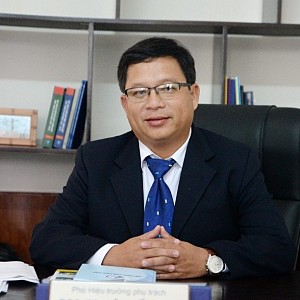
Assoc. Prof. Le Tuan Anh
Thu Dau Mot University
Thu Dau Mot University

PhD. Nguyen Quoc Cuong
Thu Dau Mot University
Thu Dau Mot University

PhD. Doan Ngoc Xuan
Thu Dau Mot University
Thu Dau Mot University

PhD. Nguyen Khoa Truong An
Thu Dau Mot University
Thu Dau Mot University
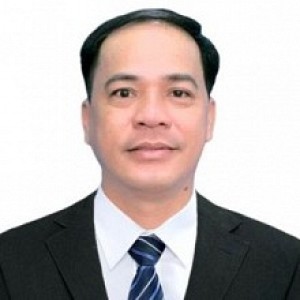
Assoc. Prof. Nguyen Thanh Binh
Thu Dau Mot University
Thu Dau Mot University
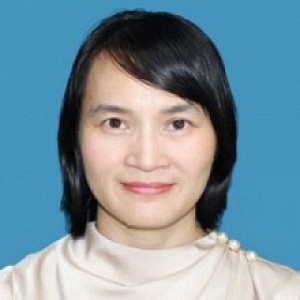
PhD. Le Thi Thuy Dung
Thu Dau Mot University
Thu Dau Mot University

PhD. Ngo Hong Diep
Thu Dau Mot University
Thu Dau Mot University
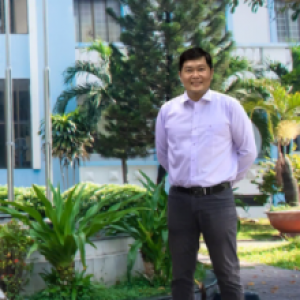
PhD. Nguyen Duc Dat Duc
Ho Chi Minh City University of Industry and Trade
Ho Chi Minh City University of Industry and Trade
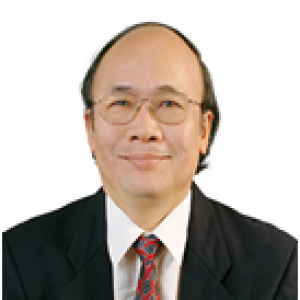
Assoc. Prof. Nguyen Van Duc
Animal Husbandry Association of Vietnam
Animal Husbandry Association of Vietnam

PhD. Nguyen Thi Nhat Hang
Department of Education and Training of Binh Duong Province
Department of Education and Training of Binh Duong Province

PhD. Nguyen Thi Cam Le
Vietnam Aviation Academy
Vietnam Aviation Academy

PhD. Trần Hạnh Minh Phương
Thu Dau Mot University
Thu Dau Mot University
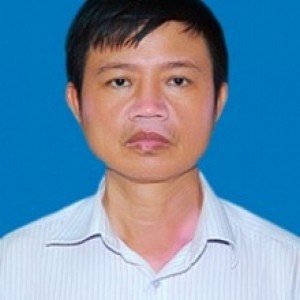
M.A. Pham Van Thinh
Thu Dau Mot University
Thu Dau Mot University

PhD. Nguyen Thi Lien Thuong
Thu Dau Mot University
Thu Dau Mot University
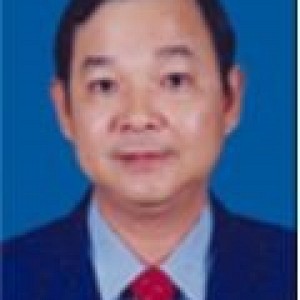
Prof. Le Quang Tri
Can Tho University
Can Tho University
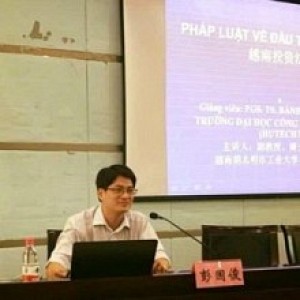
Prof. Banh Quoc Tuan
Thu Dau Mot University
Thu Dau Mot University

